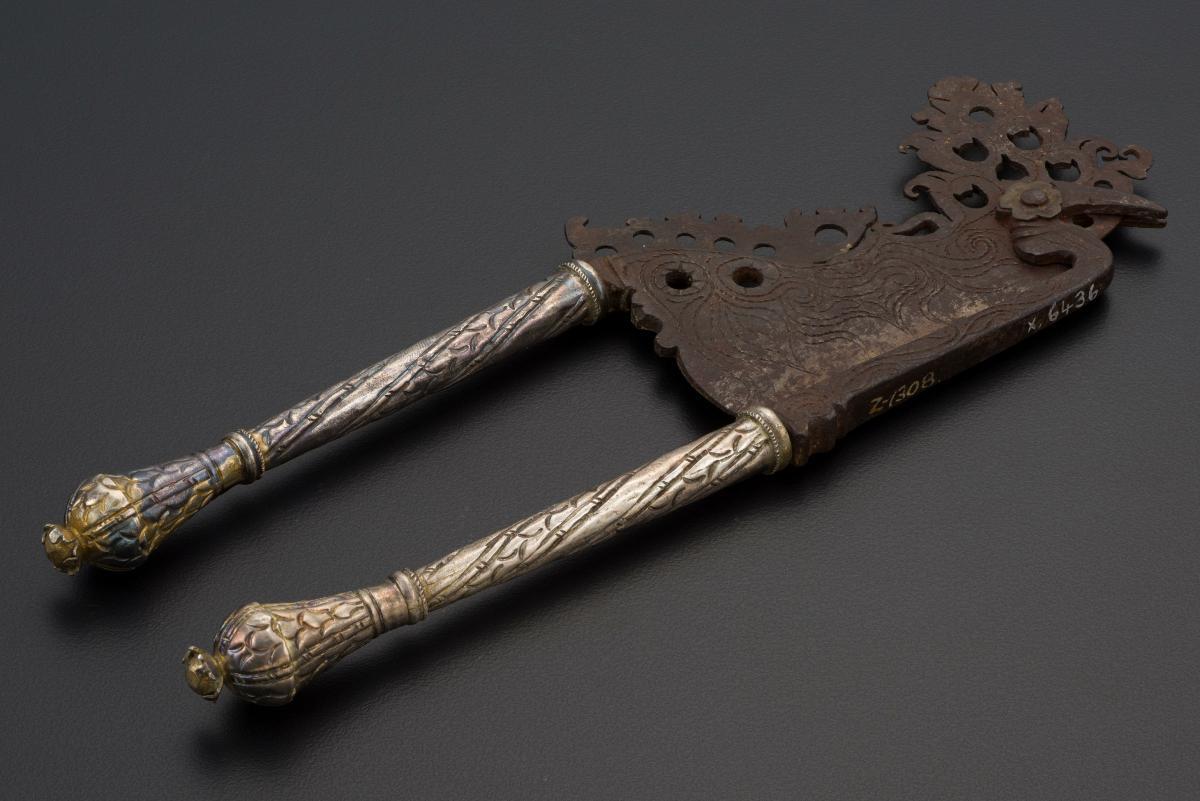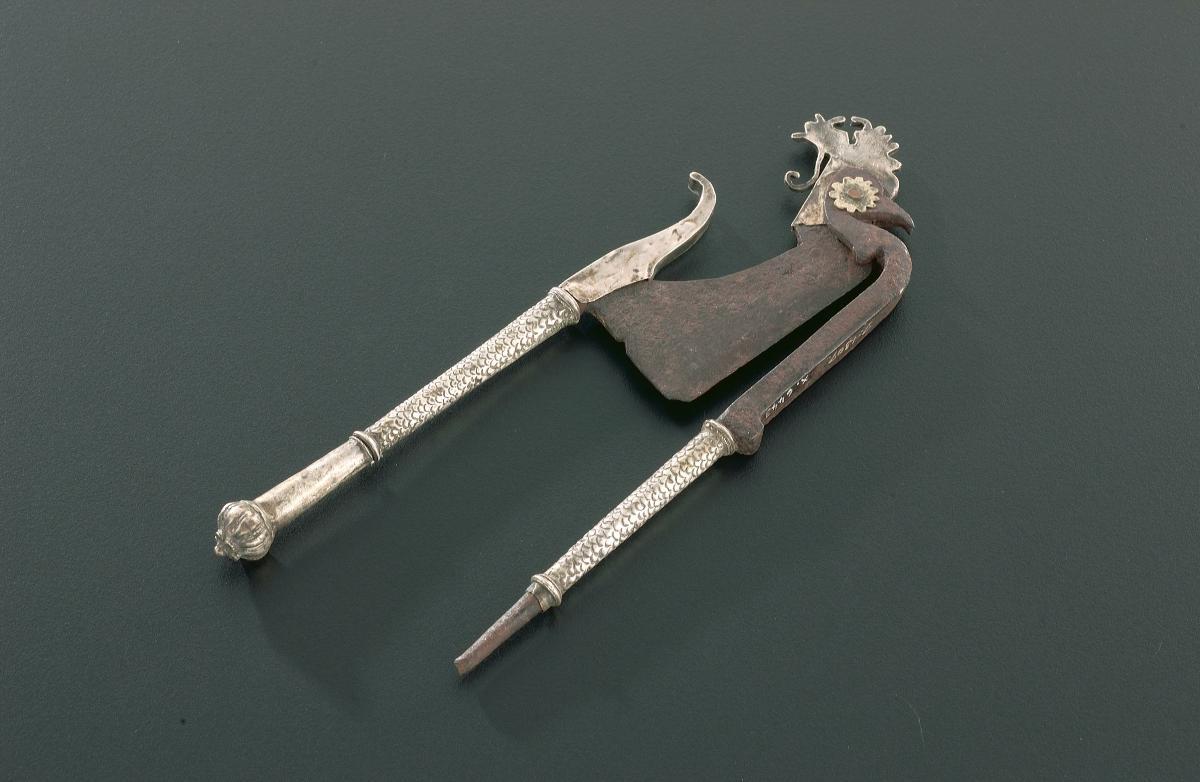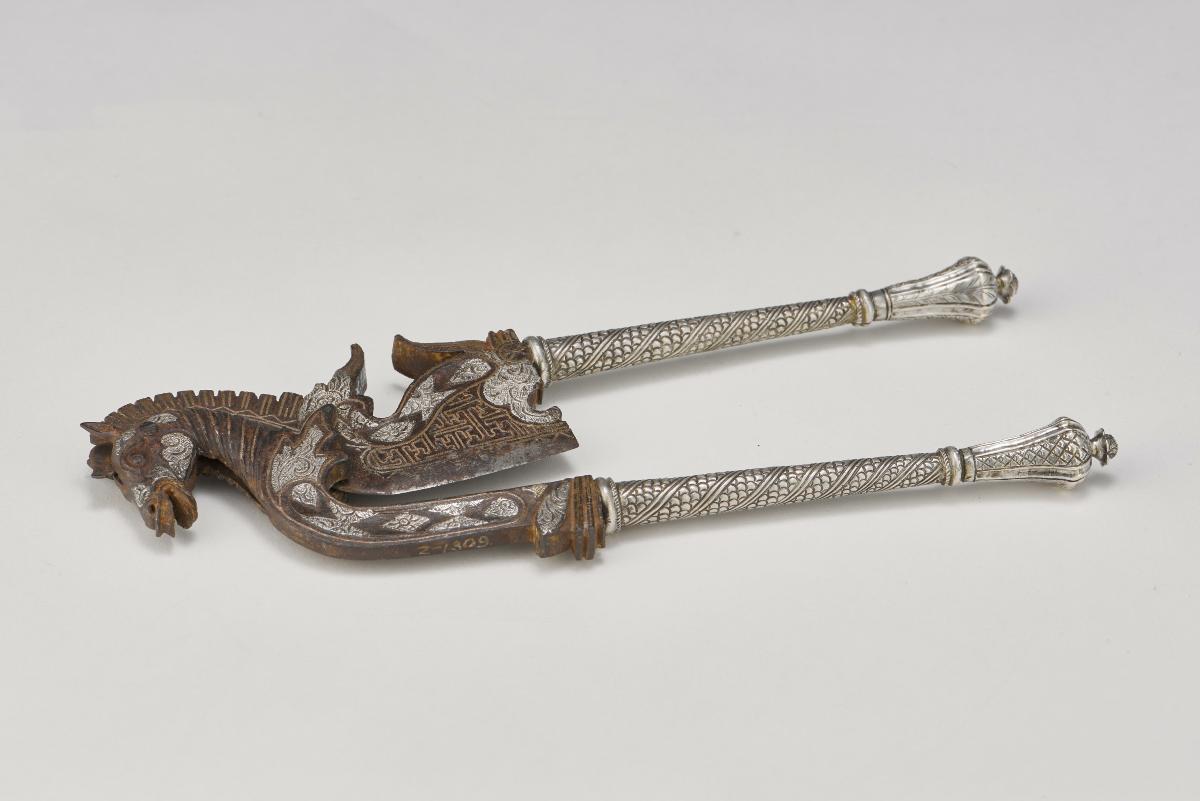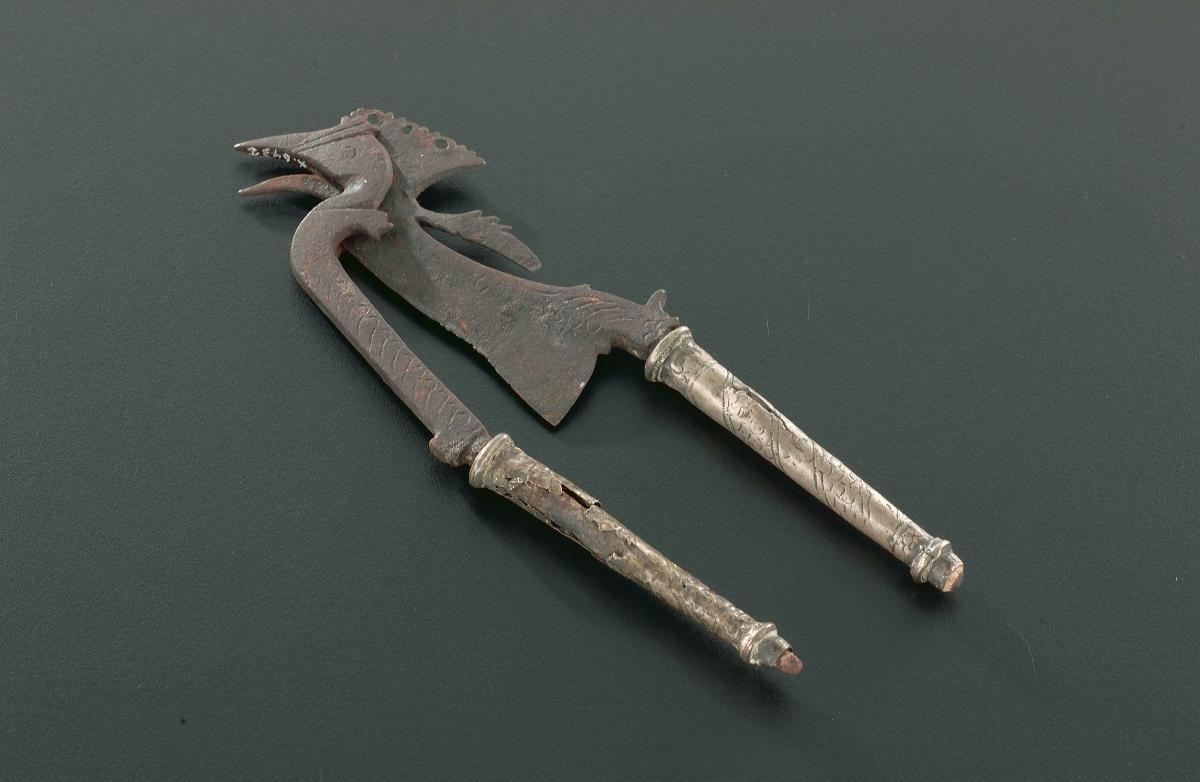Betel nut sets were usually equipped with several implements to help prepare a betel quid. A set generally comprises a receptacle for holding betel leaves, an areca nut pounder, boxes for betel and tobacco, pots for storing 'gambier' (lime), a betel nut cutter for slicing the areca nuts such as this example, and a piece of 'songket' (gold brocade cloth) for wrapping other ingredients such as cloves. A betel quid consists of a thin layer of slaked lime, thin shavings of areca nut and a betel leaf. Shears for slicing the areca nut are made of iron or steel with handles sheated in silver. The blades are often shaped in the form of a garuda, a mythical bird, or a mythical, winged horseBetel chewing was practised throughout the Malay Archipelago for centuries, and was common to all social classes. The practice remained popular until the mid 20th century. People chewed betel for its mildly narcotic effects and as a social activity. Betel chewing played a vital part in every important ceremony – from weddings to funerals.















